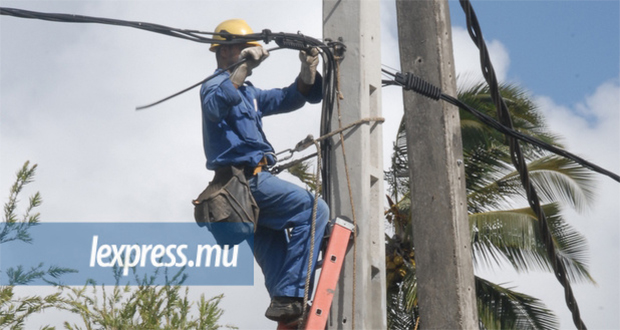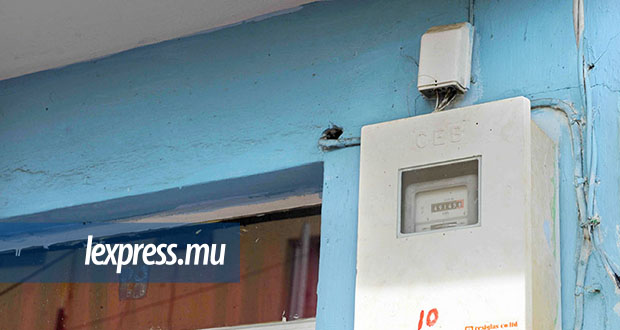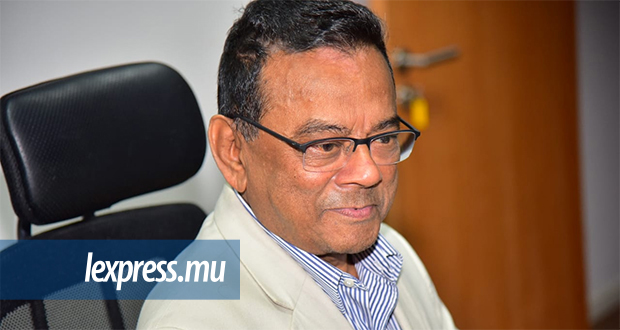Publicité
URA: with the CEB out, how much really changes in the electricity market…
Par
Partager cet article
URA: with the CEB out, how much really changes in the electricity market…

With the coming into force of twin laws – the Electricity Act 2005 and the Central Electricity Board (Amendment) Act 2020 – the Central Electricity Board (CEB) is no longer the official regulator of the Mauritian energy market. This now goes to the Utility Regulatory Authority. But is this the same body that was birthed in 2004?
1▪ Exit the CEB
The coming into force of the Electricity Act 2005 and the Central Electricity Board (amendment) Act 2020 has paved the way for the Utility Regulatory Authority (URA) to take over as the official regulator of local electricity sector. Two fundamental changes that these two laws bring were explained by energy minister Joe Lesjongard when he presented amendments to the two laws in the National Assembly on December 1, 2020: the first is that it is the URA, and not the CEB, that will handle licences for Independent Power Producers (IPPs) that currently produce about 60 per cent of the country’s total power consumption. “It will be up to the Utility Regulatory Authority to allocate licences to electricity-generating companies or to the CEB,” Lesjongard stated. The second was taking away the power of the CEB to determine the price of electricity: “The CEB now, just like any other licensee, will be required to file tariff for each electricity service to the URA, which will then determine the final tariff,” the minister explained.
The URA becoming the country’s power regulator is largely uncontroversial within mainstream parties. That’s because the problems of the CEB were largely universally recognized. It opened itself to charges of conflict of interest when it came to closing deals with private power producers (PPP), while selling electricity and determining the price. “For quite some time there has been a consensus that the CEB should not be involved in setting electricity tariffs while it continues to negotiate, renegotiates or extends power purchase agreements with IPPs; it was not a healthy situation,” explains energy expert Dr. Khaleel Elahee.
The second was that while the CEB’s power to determine energy prices dated back to the 1963 CEB Act, its system in deciding which rate to charge which type of consumer was not all that more recent. For example, to decide which user was a commercial user and which was an industrial one, the CEB relied on government regulations dating back to 1965 and which were updated the last time in 1987. The result was a string of legal court battles involving the CEB and businesses feeling they had been wrongly categorized. This is important, because many businesses chafed under the CEB’s pricing policy dating back to the 1960s where the tariffs charged to commercial users, such as small and medium businesses, offices and shops, were used to cross-subsidize lower rates charged for businesses deemed to be industrial users.
A third problem was that an energy market dominated by the CEB, and its tariff policies were not helpful to bringing renewables onto the energy market. “To reach our renewable energy goals, a lot of small and medium projects, mostly private, will have to enter the market, with many consumers also becoming producers,” says Elahee. The CEB’s own attempts at renewable energy promotion have not worked, with a subsidiary specifically set up for that now lying defunct. This is why for long external lenders such as the Agence française de développement, the European Union and the UNDP pushed for the CEB to step away from setting power prices.

2▪ The URA is born
THE URA may have started working now, but it’s an idea that has been a long time in the coming. In the late 1990s, the CEB was in dire financial straits, buffeted by fluctuating oil prices and the value of the rupee, leading lenders such as the World Bank to urge the government to start liberalizing the power sector; eventually leading to signing deals with IPPs.
But this was supposed to be part of a much larger reform of the electricity sector. The Chicago-based consulting firm Arthur Anderson was approached to come up with options. The company recommended that a separate regulatory authority be set up and that the CEB cease to be the primary regulator of the power sector. The CEB would instead become just another publicly owned corporation. At the same time in 2000, the then-MMM/MSM government also approached the World Bank’s International Finance Corporation (IFC) to come up with suggestions to reform the country’s water sector. The government decided to come up with a single regulator to run Mauritius’ electricity, water and wastewater – the URA.
In 2003, the government turned to the World Bank’s Public Private Infrastructure Advisory Facility to help draw up a plan to set up the URA, which it did in January 2004. The result was two-fold: after much shuttling back and forth to and from cabinet, then energy minister Alan Ganoo presented the Utility Regulatory Authority Act 2004 and the following year passed the Electricity Act 2005, that would help turn the URA into the main regulator of the local energy market. The financial struggles of the CEB led the government to concentrate first on electricity. A month after the Electricity Act was passed in the National Assembly, parliament was dissolved as the country headed into the 2005 elections. The URA was in the books, as was the Electricity Act 2005, but the latter was never officially brought into force.
This is where the URA went into a long hiatus. “The government had changed,” says Elahee, “and until relatively recently, there was an unwillingness of the government that came in, as well as the CEB and some private producers, not to let the URA system come into place. The old system allowed the CEB to sign power deals on unsolicited bids that appeared out of nowhere, gave government leverage of electricity prices and re-negotiating with the IPPs.” But international lenders – especially if they were expected to lend to the country’s energy sector and help the country add the capacity to produce more power to cope with growing demand – still pressured the government to bring the URA about. So in 2008, the URA was dusted off and changed: the URA’s Chairman and three commissioners that the 2004 version called for would be appointed in the same way nominees to the Independent Commission against Corruption were chosen, by the president on the advice of the prime minister and after consultation with the opposition leader. The new 2008 version of the URA was proclaimed and became law, but two things did not happen: the first is that the Electricity Act 2005 that was to strip the CEB of some of its powers to give to the URA was not brought into force and the Labour-led government did not succeed in deciding who should occupy positions at the URA, despite carrying out an international advertising campaign to find its CEO. So drawn out had this process become that then-MSM member Nando Bodha started calling those supposed to helm the URA “rare birds”. “In between 2010 and 2014 again there were several attempts to find a CEO for the URA, but this was not easy to get,” says Osman Mahomed, opposition MP of the Labour Party and who, until 2014, was the executive chairman of the now-defunct Maurice île Durable Commission.

3▪ What changed in the URA
IT was not until 2016 under the MSM-led government that the URA was brought back into the picture. But it was not the one initially conceived in 2004. In between 2016 and 2020, there were two main changes made in the way the URA works. The first was an amendment to the Utility Regulatory Authority Act that was initially floated in 2004 and then amended in 2008. The change made in 2016 was to loosen the qualifications of the chairperson and commissioners that would man the URA. Or rather, the lifting of the requirement for formal qualifications. “One and a half years it took to come with a ridiculous amendment,” then-leader of the Opposition Paul Bérenger argued when debating the 2016 amendment on June 28, that year, “I find it ridiculous. Just doing away completely with qualifications! This is the result. If we had amended the required qualifications, if you tell me that what was in the law, that the chairperson to be appointed must be a university degree holder, is done away with!”. When the amendment was being passed, then-energy minister Ivan Collendavelloo said he hoped “the Authority would become operational within the next few months”. That did not happen.
Three years later, in 2020, the government passed amendments to the Electricity Act 2005 and the CEB Act to bring about the second major change to the URA system since 2016. The original URA and the Electricity Act 2005 to empower it envisioned itself as part of a general liberalization of electricity production in Mauritius. Both laws initially stated that private players would not be able to produce electricity in the country, but also sell to whoever was willing to buy that power. In short, the CEB would not only be any longer the sole producer of electricity, but also it would not the only one able to buy electricity from private producers.
The 2020 amendments to the Electricity Act 2005 and the CEB Act changed that. On December 15, 2020, Lesjongard (now the energy minister replacing Collendavelloo) stated that the new version of these laws would “recognize the CEB as the historical operator and single buyer. The CEB will be licensed as a single buyer and the bulk supply license will be removed. As such, there will be no eligible customer to purchase electricity from any other generator”. This new amended version leaves certain problems unresolved, says Elahee, “Smart cities can generate their own power to sell to their tenants and residents as a way of getting around this,” but he asks, “how would the URA handle producers such as Terragen, which although it has suspended supplying power to the national grid, is still producing electricity and using it to run its sugar-milling operations” This is an internal company arrangement, but is this something the URA can intervene in? We just don’t know, that is still unclear.”
The problem is that since 2016 although the URA existed, it has not made any of this clear. “Two of the functions of the URA in law are to mediate or arbitrate disputes and to establish procedures for receiving and enquiring into complaints; the question is to what extent has the URA fulfilled even the above?” says Mahomed, “Amidst important concerns in the sector, when have we heard from its Chairperson or its CEO? Very recently we had important litigious matters concerning an IPP, yet URA played dead.” The other problem is that the URA is not supposed to only look at electricity, but water and wastewater too. Just as the Electricity Act empowers the URA to regulate electricity, it also needs water legislation to empower it to regulate the water sector. In December 2020, Lesjongard announced that the government intends “to come forward with a water bill and a wastewater bill in due course”. Until today, Mahomed argues, “the law has not been amended for the URA to regulate the water and wastewater sector; clearly a proper distribution of water is not the URA’s priority, nor that of the government”.

4▪ Old wine, new bottle?
THESE have not been the only changes made to the original URA system since 2016. The next change is particularly problematic given the context in which the URA is supposed to take the reins as the main electricity regulator in the country.
The government is currently embroiled in a dispute with IPP Terragen, which has switched off its electricity supply to the national grid since April, citing mounting global coal prices that make it uneconomical to sell its power to the CEB at the same rates. This is particularly the type of dispute that the URA is supposed to handle. Terragen’s power purchase agreement signed with the CEB officially expired in June 2020, and has been extended since then. But other major IPPs are also seeing their contracts coming to an end: Alteo Energy Ltd’s contract expired in December 2018 and was extended until December 31, 2021. At present it is currently involved in talks with the CEB over a possible three-year extension. It is in the strange position of continuing to supply the national grid with power, but without a formal contract in place. While Omnicane’s IPP operation in La Baraque expires in July 2027, and the contract for its coal-only operation in St.-Aubin expires in September 2025. Now it will be the URA, and not the CEB, that will be regulating all these and looking to come up with fresh deals with these IPPs.
Here is the problem: amongst the 93 pieces of legislation that the 2021 budget changed, was a change to the Utility Regulatory Authority Act. Although the 2016 change to the amendment watered down the qualifications required of people heading the URA, what the 2021 budget did was change the composition of the URA from a chairperson and three commissioners, to now a chairperson leading six commissioners. The extra three being one representative each of the finance and energy ministries, and one from the Attorney General’s Office.
But what has changed also is the way that those heading the URA are appointed. Previously, the head of the URA and its commissioners were supposed to be appointed by the president on the advice of the prime minister and after consultation with the opposition leader. After the 2021 budget, however, the URA chairman and all the commissioners are now to be handpicked by the energy ministry. If political domination of the CEB by the government is seen as the source of its ills, having an independent regulator handpicked by the energy ministry risks simply recreating that same old problem, but in a new institution. “This is a very complex and technical job, you need people with a sound technical expertise,” says Elahee, “the URA could just end up like another CEB, with the difference that at least in the CEB you have people who understand the technical side of it.” Not only will they be in charge of overseeing complex negotiations with existing and potentially new IPPs, but they will also have to figure the intricacies of an increasingly complicated Mauritian electricity market. “They will have to be able to differentiate between different types of power such as the power produced by the CEB to satisfy peak power from Nicolay station as opposed to base load power,” argues Elahee, “they will have to understand that not every kilowatt hour of electricity is the same and to attribute different value to different types of power since the sources and costs of producing electricity are different for different producers. Ultimately, the URA is a good thing, and we have no choice but to go for it; but to really work it out has to be fair and transparent in whatever it does.”
Publicité
Publicité
Les plus récents






